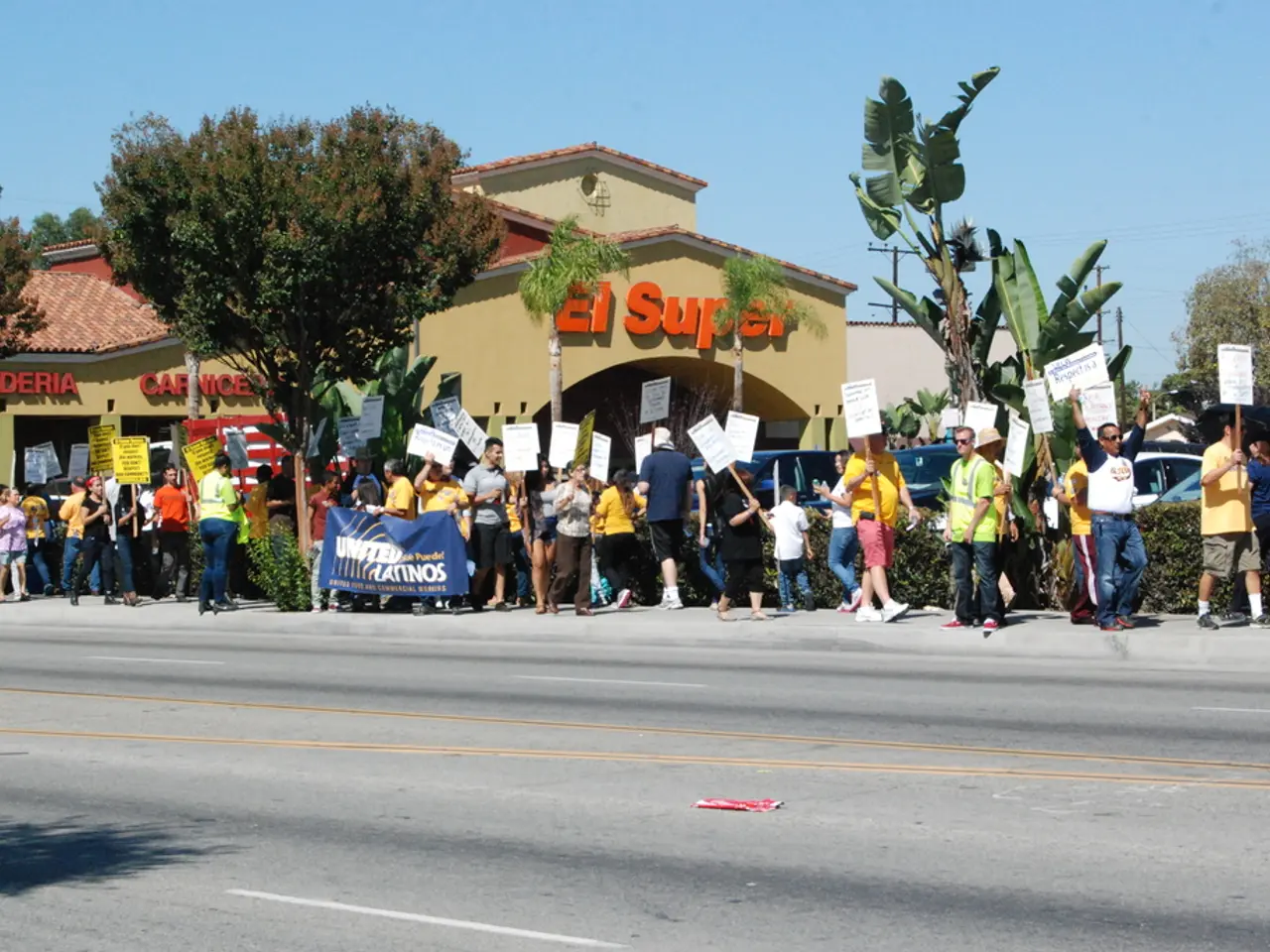"Government of Awg Tengah acknowledges increasing need for territory"
In the heart of Borneo, Sarawak is making significant strides in land administration and geospatial technology use, particularly within the Sarawak Corridor for Renewable Energy (SCORE) area. This progress is marked by accelerated formalization of Indigenous land rights, integration of modern technologies, active community engagement, and forward-looking infrastructure projects.
At the forefront of these developments is the Sarawak government's investment of approximately US$30 million in the Land and Survey Information System (Lasis). This system, central to the development of Sarawak, has the capability to register any land instrument for land dealing within a day after their lodgment with the state Land and Survey Department. It also integrates high-quality spatial mapping information with textual attribute information of registered titles for visualization.
Since the launch of the New Initiative NCR (Native Customary Rights) Land Survey Programme in October 2010, about 1.2 million hectares of NCR land have been surveyed. This has led to 935,760 hectares being gazetted as Bumiputera Communal Reserves and 120,608 hectares surveyed as individual lots with over 101,000 individual titles issued. This legal clarity supports indigenous land rights and recognition, essential for social stability and development in Sarawak.
The Sarawak government, in collaboration with the federal government, allocates funding to expedite these land surveys, aiming to finalize pending NCR land applications and prevent overlapping land claims. Transparency and regular engagement with Indigenous communities are emphasized to ensure fairness and effectiveness.
The use of advanced geospatial mapping, cadastral surveying, and land information systems underpins the formalization of land rights, planning of infrastructure projects, and environmental management. Although detailed specifics on geospatial technologies applied in SCORE were not explicitly outlined, the extensive land surveying and titling indicate their integral role.
Infrastructure improvements are also a key focus, with Sarawak advancing renewable energy infrastructure. A strategic partnership with China Three Gorges International Corporation and Shanghai Electric is developing a 1 GW floating solar project at the Bakun Reservoir within SCORE. This project will optimize renewable energy output by combining solar and hydro power facilities, critical for sustainable industrial development in the region.
The Bakun Hydroelectric Plant remains the backbone of Sarawak’s energy, with hybrid solar-hydro power integration at key sites aiming to expand renewable energy capacity without additional land use.
Sarawak's Forest Department promotes community-based forest conservation and sustainable forest management, working closely with local Indigenous communities and private-sector partners. This includes ecosystem restoration, social forestry programs, and supporting alternative livelihoods such as non-timber forest products (NTFPs).
Infrastructure improvements like footpaths and water systems have been completed through collaboration between the Forest Department and international partners, reflecting integrated approaches to community welfare and forest conservation.
The primary management tool for regulating timber extraction and production in Sarawak is the GIS-based forest inventory system. This system is used to access forest resources, develop timber harvesting schedules, re-forestation programmes, project future timber supplies, and for operational planning activities related to maintaining the sustainable use of forest resources.
The demand for large-scale geo-referenced maps of each parcel of land and associated ownership information is growing. The GIS industry is expected to provide comprehensive and specialized applications and solutions for the development of Sarawak.
Key figures from around the world, including Eberhard van der Laan, Mayor of Amsterdam, Steven W Berglund, president and CEO of Trimble Navigation (USA), K K Singh, CMD of Rolta Group (India), Sanjay Kumar, CEO of Geospatial Media and Communication (India), and Datuk Amar Awang Tengah Ali Hassan, Second Minister of Resource Planning and Environment in Sarawak, spoke at a recent forum, highlighting the global interest in Sarawak's progress and initiatives.
Awg Tengah is also the Minister for Public Utilities and Minister for Industrial Development, underscoring the comprehensive approach being taken in Sarawak's development efforts.
The Sarawak government is aware of the growing demand for land due to factors such as population growth, rural-urban migration, infrastructure development, and increasing expectations for a healthy environment. Accurate data recording in the Land Register is necessary for quick references and searches by the public and land administrators. The reliability of what is entered in the Land Register, including maps and plans, is a fundamental requirement under the Torrens System of land registration.
These combined efforts support sustainable development and environmental stewardship across the SCORE region.
- In the context of Sarawak's progress, the Sarawak government's investment in the Land and Survey Information System (Lasis) has been instrumental, enabling the registration of land instruments for dealing within a day and integrating spatial mapping information with textual attribute information of registered titles for visualization.
- Recognizing the importance of geospatial technologies in supporting indigenous land rights and environmental management, the Sarawak government's emphasis on advanced geospatial mapping, cadastral surveying, and land information systems is crucial for the formalization of land rights, planning of infrastructure projects, and sustainable development in the region.








